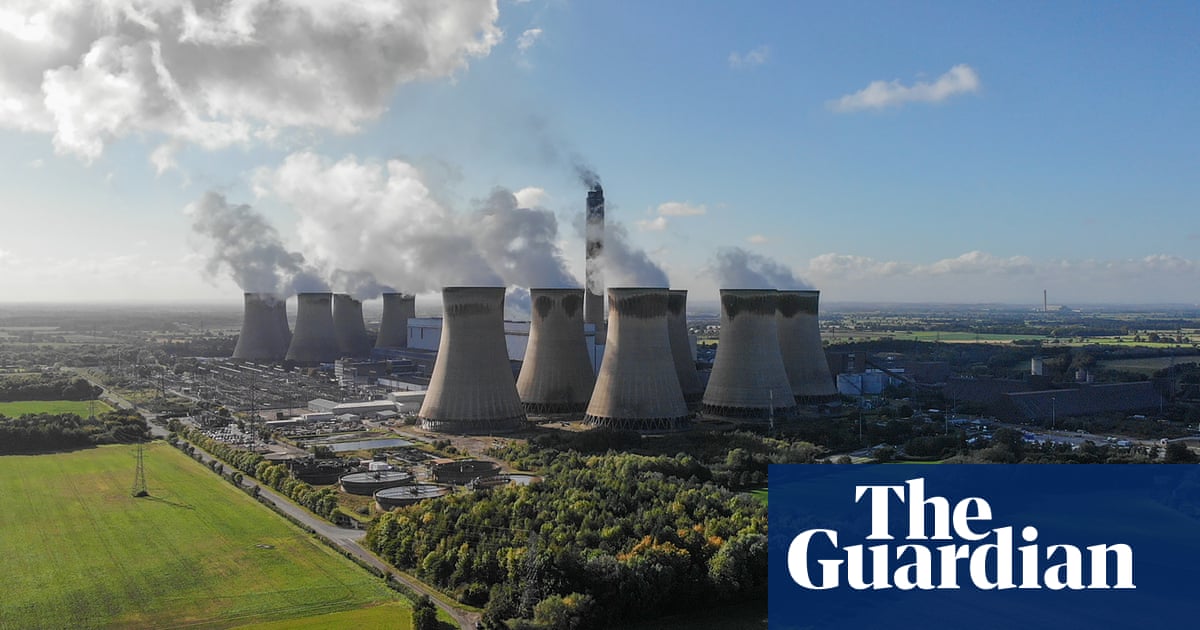- cross-posted to:
- energy@slrpnk.net
- climate@slrpnk.net
- cross-posted to:
- energy@slrpnk.net
- climate@slrpnk.net
The Drax power station was responsible for four times more carbon emissions than the UK’s last remaining coal-fired plant last year, despite taking more than £0.5bn in clean-energy subsidies in 2023, according to a report.
The North Yorkshire power plant, which burns wood pellets imported from North America to generate electricity, was revealed as Britain’s single largest carbon emitter in 2023 by a report from the climate thinktank Ember.
The figures show that Drax, which has received billions in subsidies since it began switching from coal to biomass in 2012, was responsible for 11.5m tonnes of CO2 last year, or nearly 3% of the UK’s total carbon emissions.
Drax produced four times more carbon dioxide than the UK’s last remaining coal-fired power station at Ratcliffe-on-Soar in Nottinghamshire, which is due to close in September. Drax also produced more emissions last year than the next four most polluting power plants in the UK combined, according to the report.
Frankie Mayo, an analyst at Ember, said: “Burning wood pellets can be as bad for the environment as coal; supporting biomass with subsidies is a costly mistake.”
The company has claimed almost £7bn from British energy bills to support its biomass generation since 2012, even though burning wood pellets for power generation releases more emissions for each unit of electricity generated than burning gas or coal, according to Ember and many scientists. In 2023, the period covered by the Ember report, it received £539m.
…
The government’s own spending watchdog, the National Audit Office, has warned that ministers have handed a total of £22bn in billpayer-backed subsidies to burn wood for electricity despite being unable to prove the industry meets sustainability standards.
Mayo said: “Burning wood for power is an expensive risk that limits UK energy independence and has no place in the journey to net zero. True energy security comes from homegrown wind and solar, a healthy grid and robust planning for how to make the power system flexible and efficient.”
The FTSE 100 owner of the Drax power plant made profits of £500m over the first half of this year, helped by biomass subsidies of almost £400m over this period. It handed its shareholders a windfall of £300m for the first half of the year.



It’s not. That was the initial pitch but it needs far more than is knocking about as waste so they are cutting down swathes of forest in North America, chewing it all up, making it into pellets and shipping it over here. The major concerns previously raised were about whether the forests being used were sustainable as well as the timescale to fit CCS.